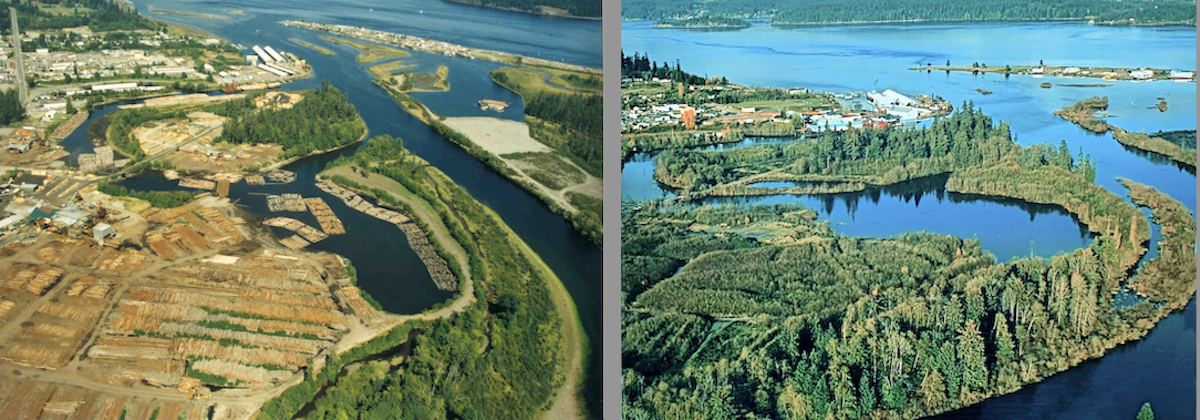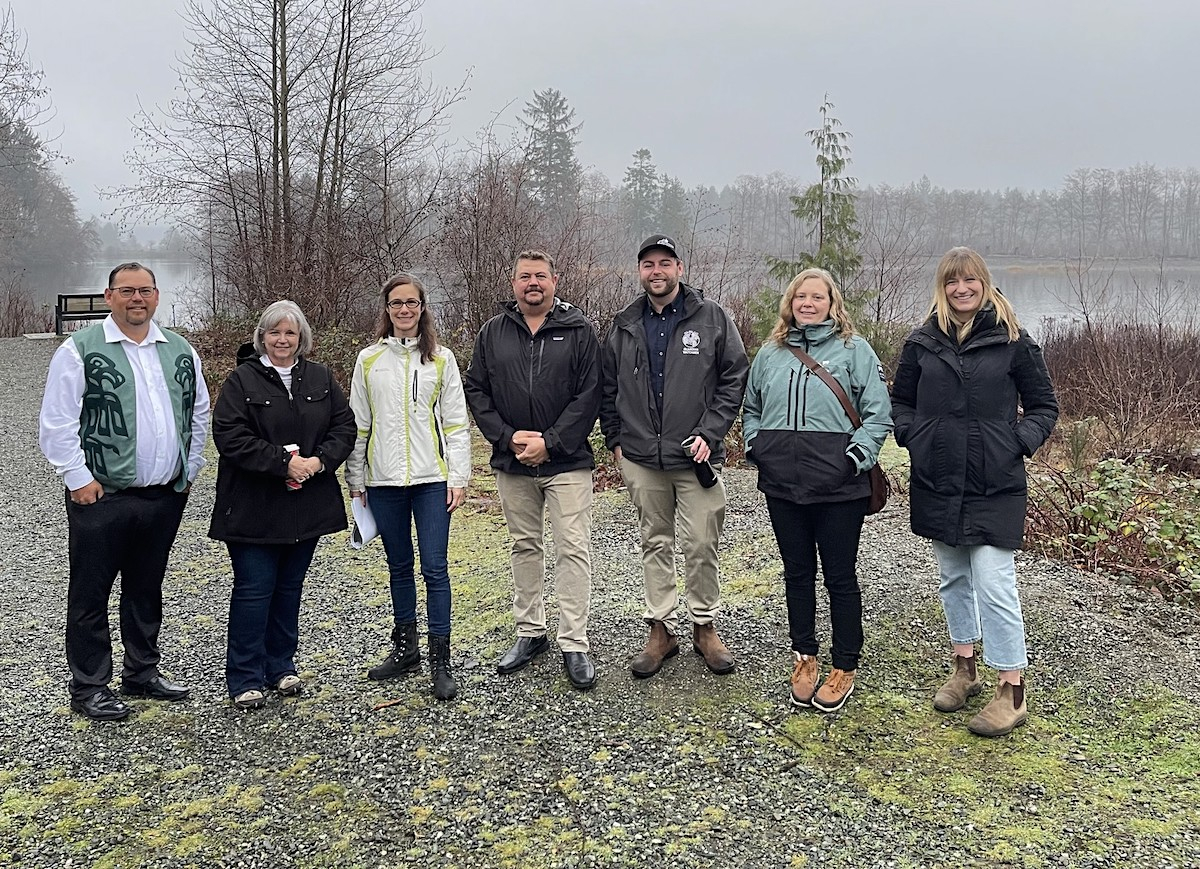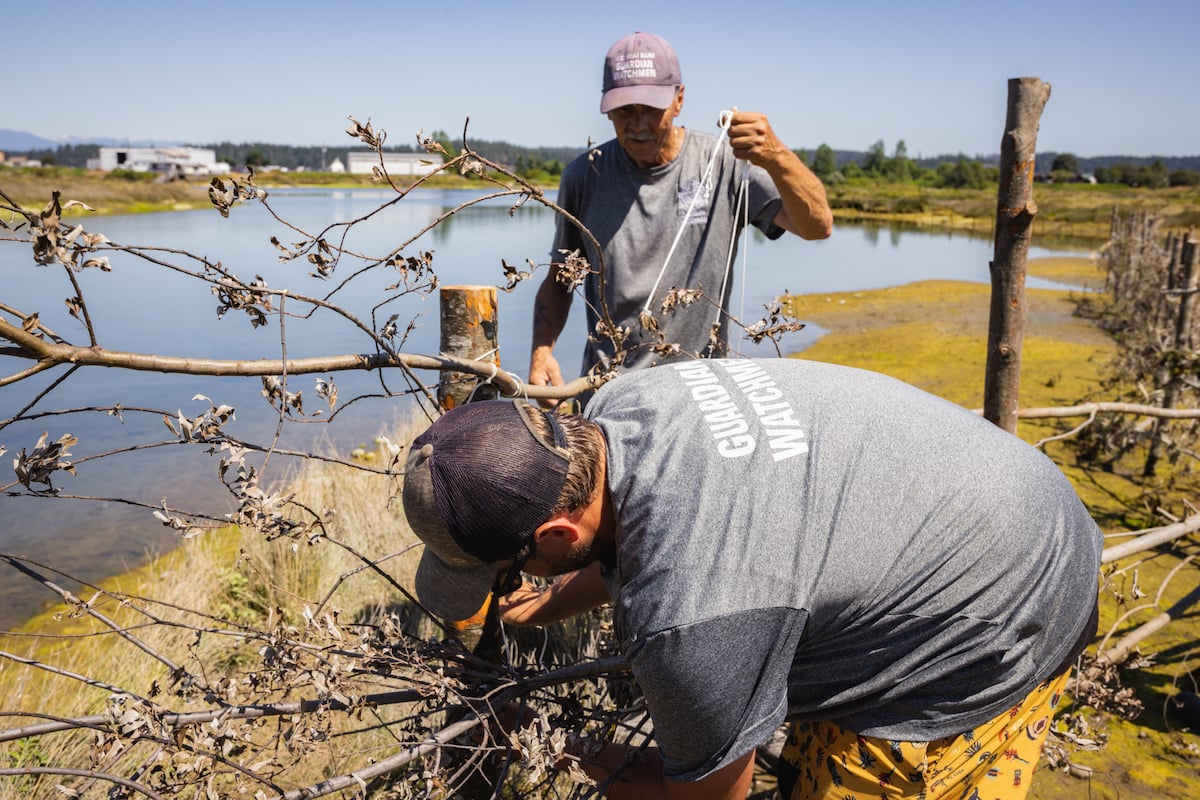Support strong Canadian climate journalism for 2025
First Nations working to restore wild salmon and vital fish habitat on northeastern Vancouver Island will receive $3.4 million for a trio of stewardship projects in the Campbell River region.
The restoration of salt marshes in the Campbell River estuary, a new fish trap based on traditional practices, and a hatchery are being jointly funded by the B.C. and federal governments.
The estuary and fish trap projects, which also involve Greenways Land Trust and A-Tlegay Fisheries Society as partners, reflect the Wei Wai Kum Nation’s goal to revitalize salmon populations, said Chief Coun. Chris Roberts.
Salmon are the foundation of coastal First Nations’ identity and a keystone species for the entire coastal ecosystem, Roberts said.
“Salmon are part of who we are. It's more than just a food and economic resource,” he said.
“It's the relationship we have with our environment, and [salmon] remind us of how we're all connected to the land and these watersheds that are our home.”
The fish trap project is especially gratifying, he said, because it will pair First Nations traditional technology with modern materials to conserve and selectively harvest salmon.
Traditional fish traps or weirs crafted with wood stakes or stone structures were widely used to corral and capture spawning salmon for thousands of years on the coast.
While still in the design stage, the new version of ancestral technology means First Nations fishers will use a low-carbon way to selectively harvest abundant pink salmon, while still allowing threatened stocks like chinook or steelhead salmon to continue upriver to spawn unharmed.
“It’s validating,” Roberts said. “It’s a metaphor of how we are moving forward, rooted in our traditional methods and stewardship practices.”
The restoration project in the Campbell River estuary involves two hectares in the area known as Mill Pond.
The pond site — now part of the verdant Baikie Island Reserve — was once part of an industrial wasteland that saw the estuary jammed with log booms and encircled by timber yards and mills two decades ago.
The Wei Wai Kum’s original village was displaced and massive intrusions on the estuary took place to make way for industrial-scale logging, including the extensive dredging to create Mill Pond, Roberts said. It was very destructive and had a lot of harmful impacts on salmon habitat and the environment overall.
“To be able to reverse some of those impacts … it feels really good to be a part of that,” he said.

Greenways Land Trust and its community partners have worked for many years to revitalize large swaths of the estuary and restore Campbell River’s storied reputation as the world’s salmon capital.
But further rejuvenating Mill Pond to improve the tidal flats that act as nurseries for juvenile salmon before they head out to sea has been rewarding, Danny Hurry, Guardian assistant manager of the Wei Wai Kum Nation’s Guardian program.
Major land work to recreate the estuary’s small shaded channels and marsh benches was finished in the summer.
In the early spring, Guardian team members will help plant eelgrass and sedges in the salt marsh, and set up natural alder and willow fencing to protect the fledgling plants and deter voracious geese that can strip an estuary of its vital vegetation, Hurry said.
“A goose can eat a pound of sedge per day,” he said.
Estuaries can sustain migratory goose populations, but invasive species, originally brought in for hunting and now there year-round, can be destructive, Hurry added.
The project included commercial dive training for two members of the Guardian team, said Hurry.
“We can definitely use that skill in other areas,” he said, noting the stewardship team is looking to deal with derelict vessels and help with abalone surveys in their territory.
The two projects offer a great education opportunity for the community, especially youth, given they are taking place in the Wei Wai Kum’s backyard, Roberts said.
Often, resource stewardship projects are based in remote areas of the nation’s traditional territory rather than along the Campbell River, the community’s “home stream” located next to their main village.
“We can plant those seeds in our young people to learn western education and science, but also the traditional practices and methods that will inspire careers and pathways in resource management in our territory on behalf of their nation.”

The British Columbia Salmon Restoration and Innovation Fund (BCSRIF) will also help rebuild the Xwémalhkwu (Homalco) First Nation’s Taggares hatchery in Orford Bay.
The hatchery will restore salmon populations after a massive landslide and flooding triggered by glacial melting in 2020 wiped out key salmon habitat in the Elliot Creek watershed in Bute Inlet on B.C.’s remote central coast.
The funding will assist ongoing work to preserve struggling salmon populations, said Alison Trenholm, lands governance director for Homalco First Nation, in a press release.
"A new hatchery design and the studies undertaken by this project will help to ensure that Homalco stewardship of salmon throughout our territory will continue for future generations."
B.C. coastal communities depend on sustainable fishing and it’s the province’s responsibility to help ensure the long-term health of fish habitats, said Water, Land and Resource Stewardship Minister Nathan Cullen.
"These projects go a long way to breathe new life into marine habitats,” Cullen said.
Rochelle Baker / Local Journalism Initiative / Canada's National Observer







Comments
good news, cooperation, first nations leading the way to a sustainable future